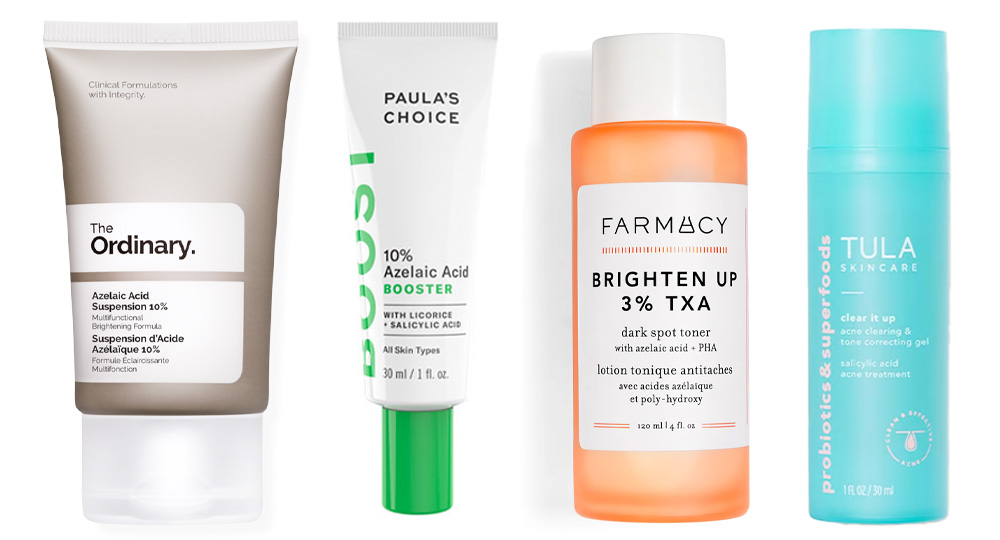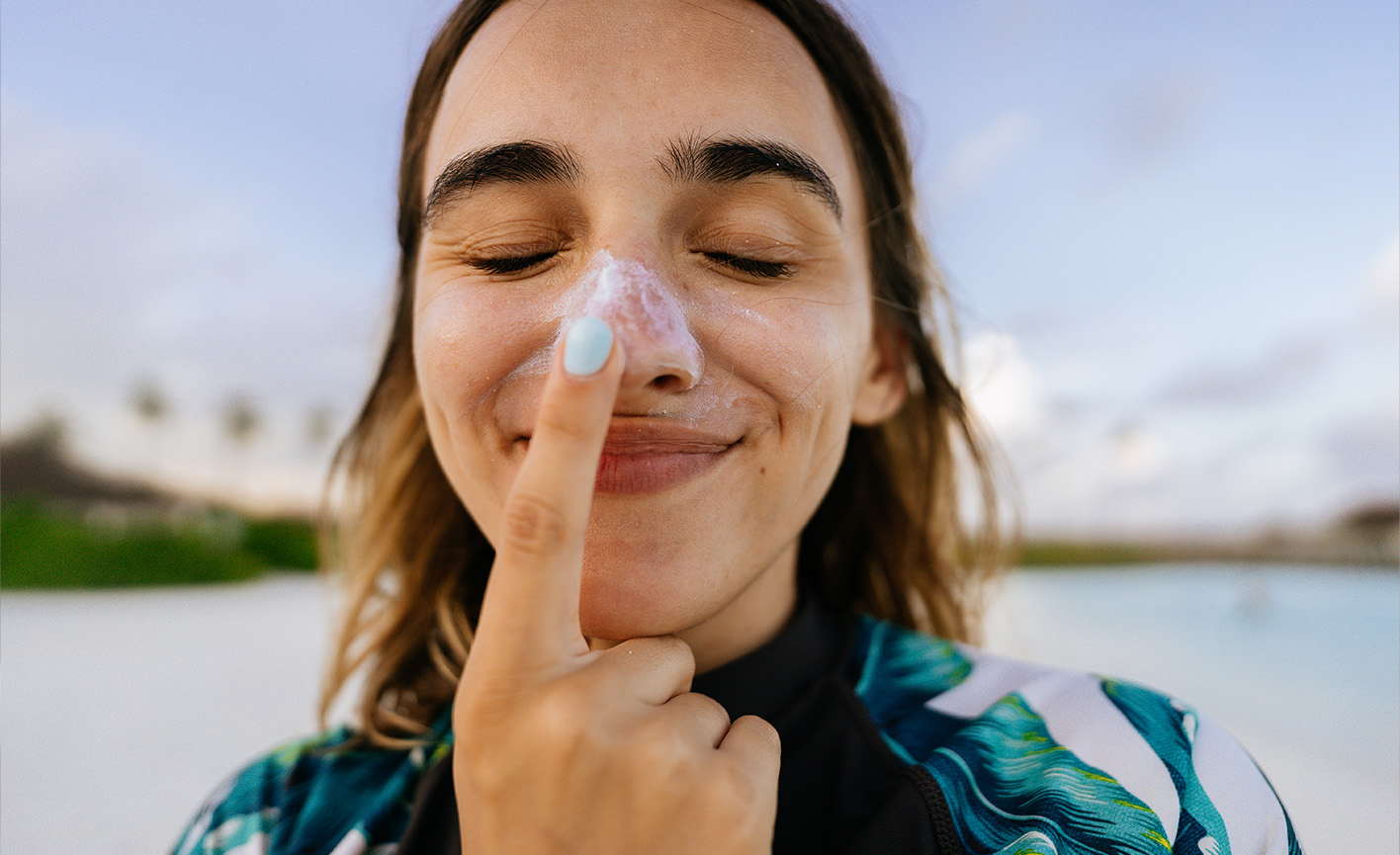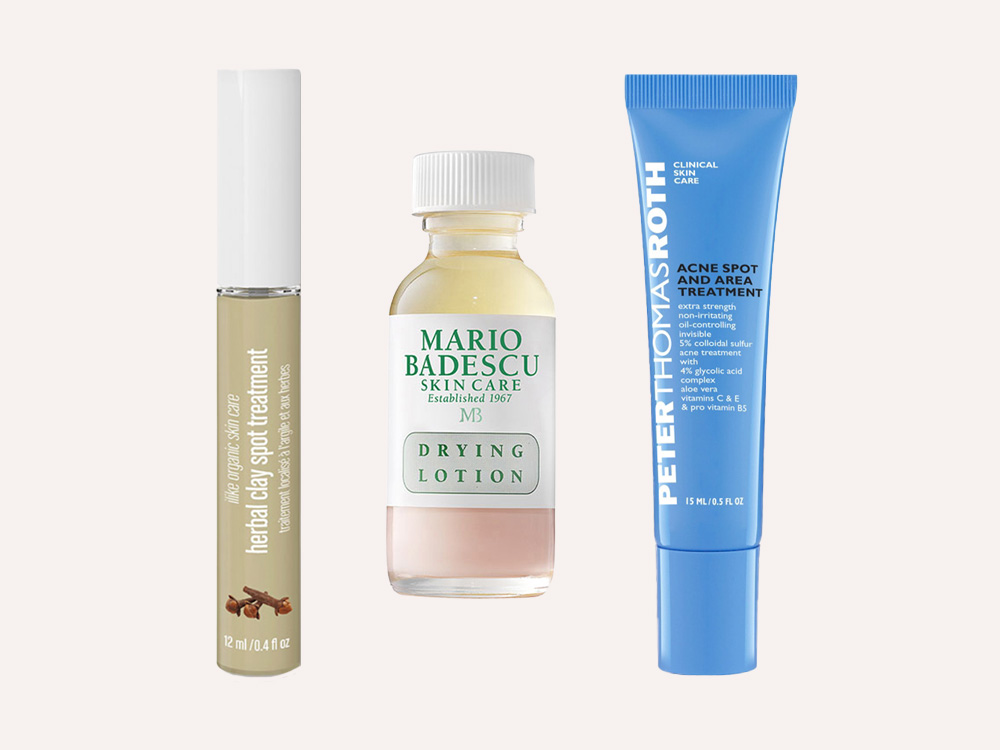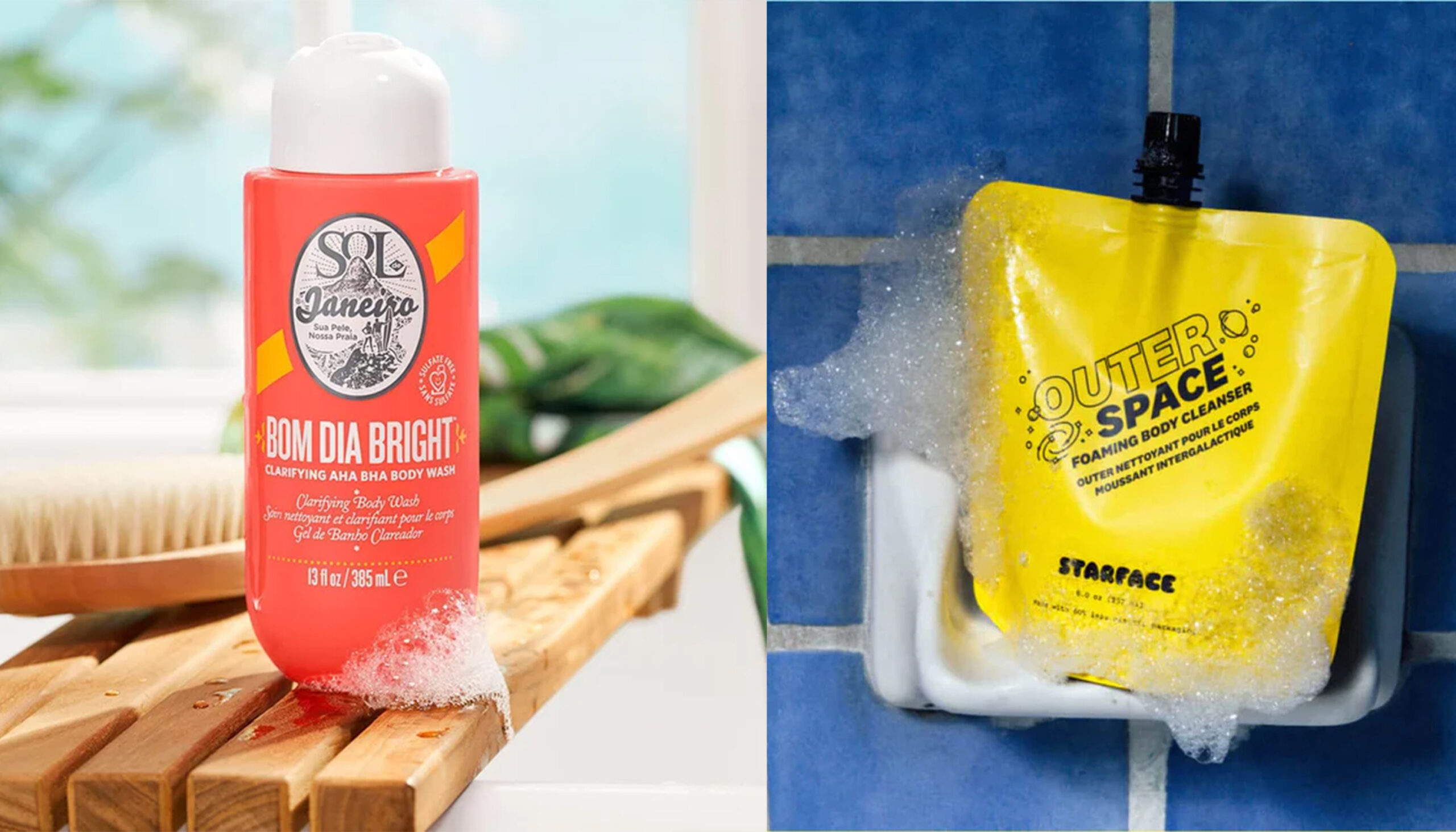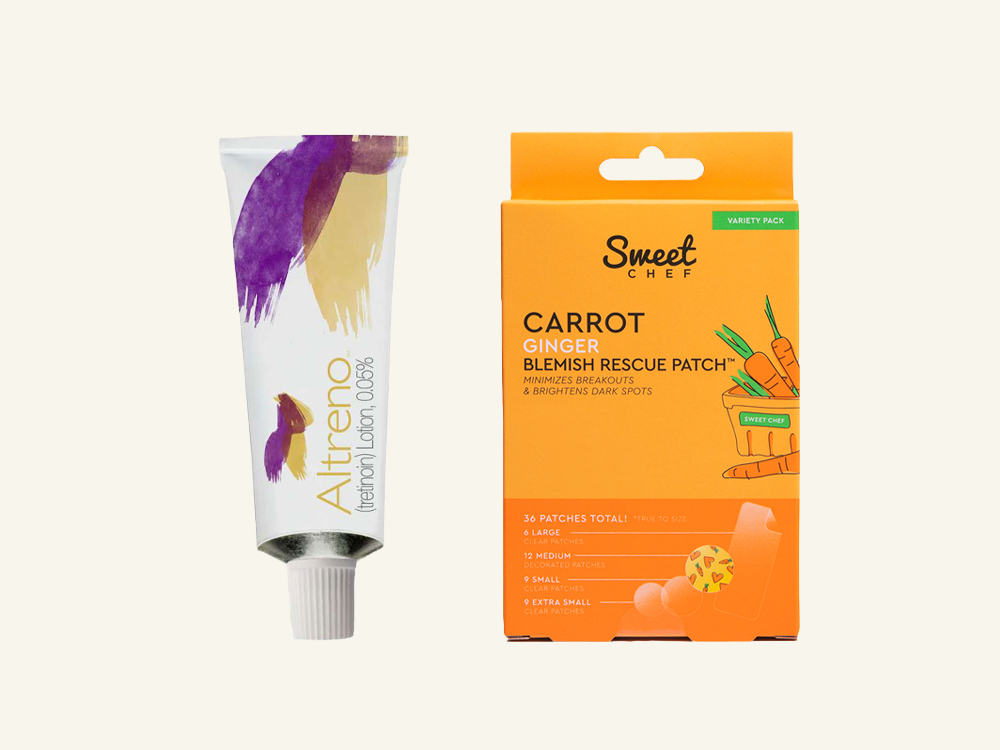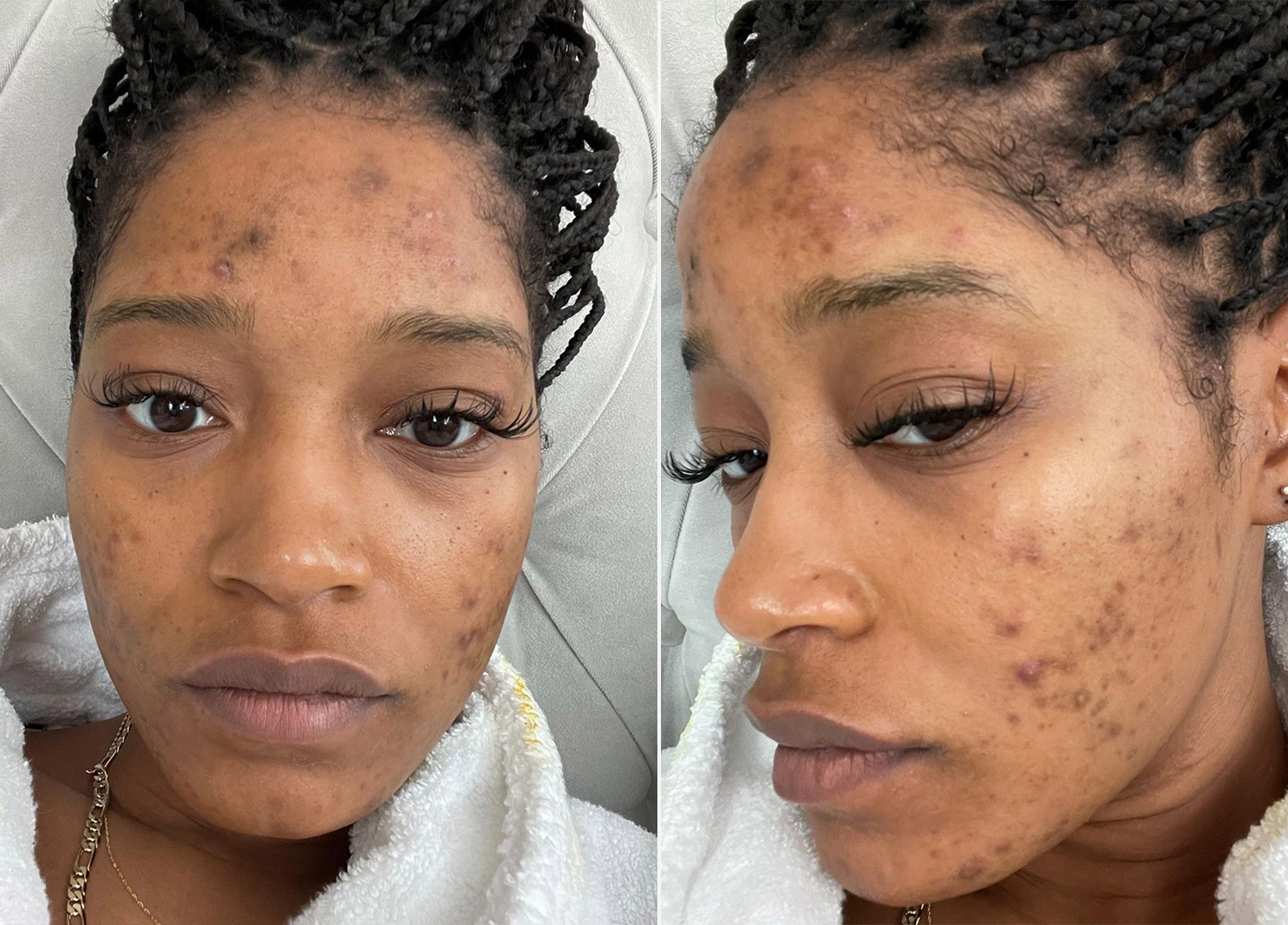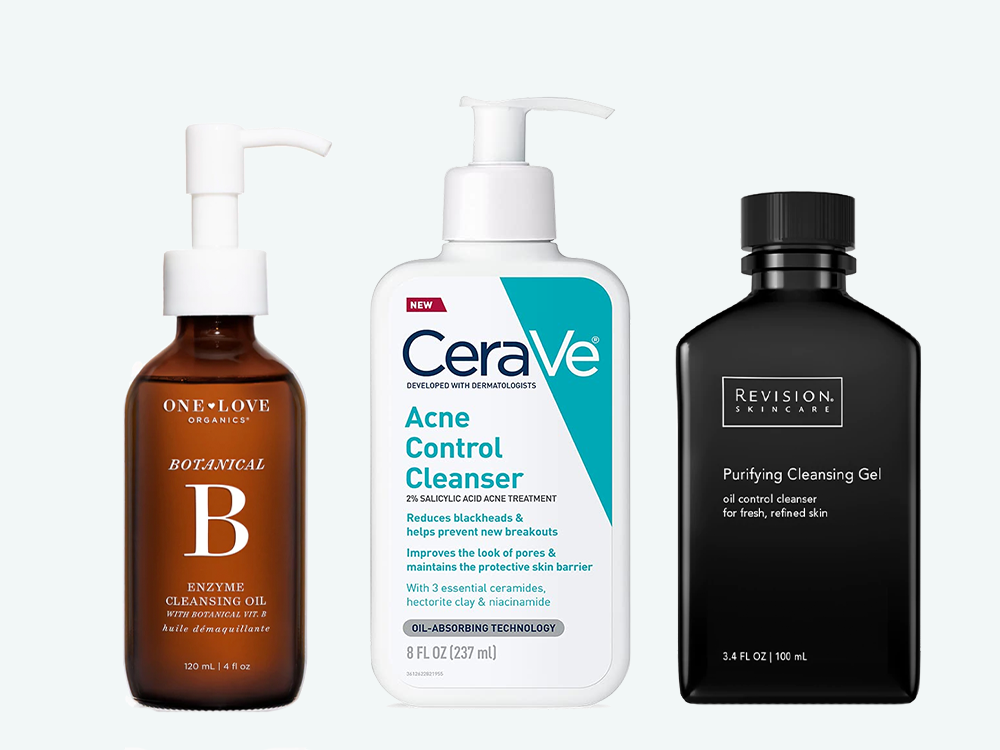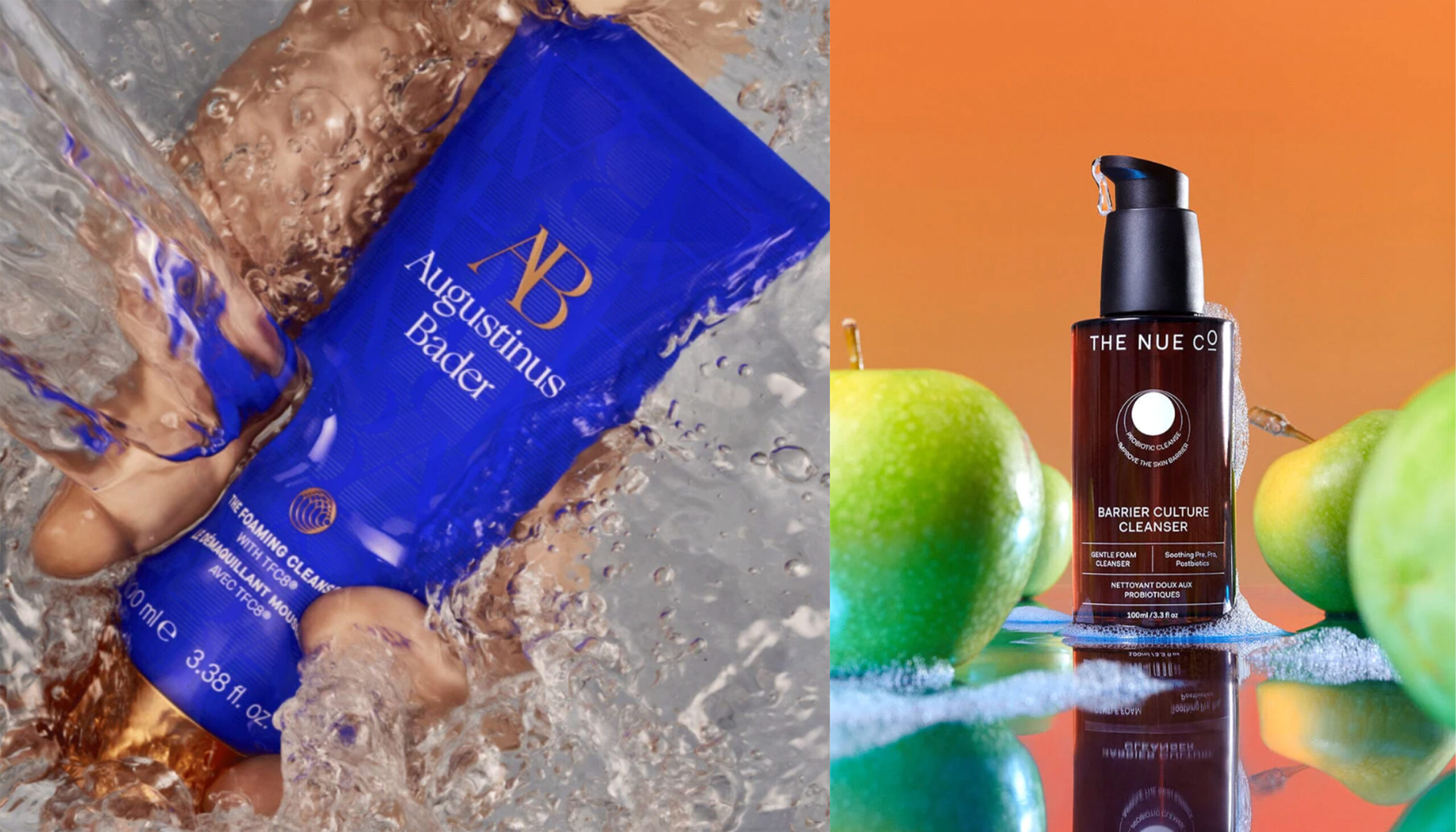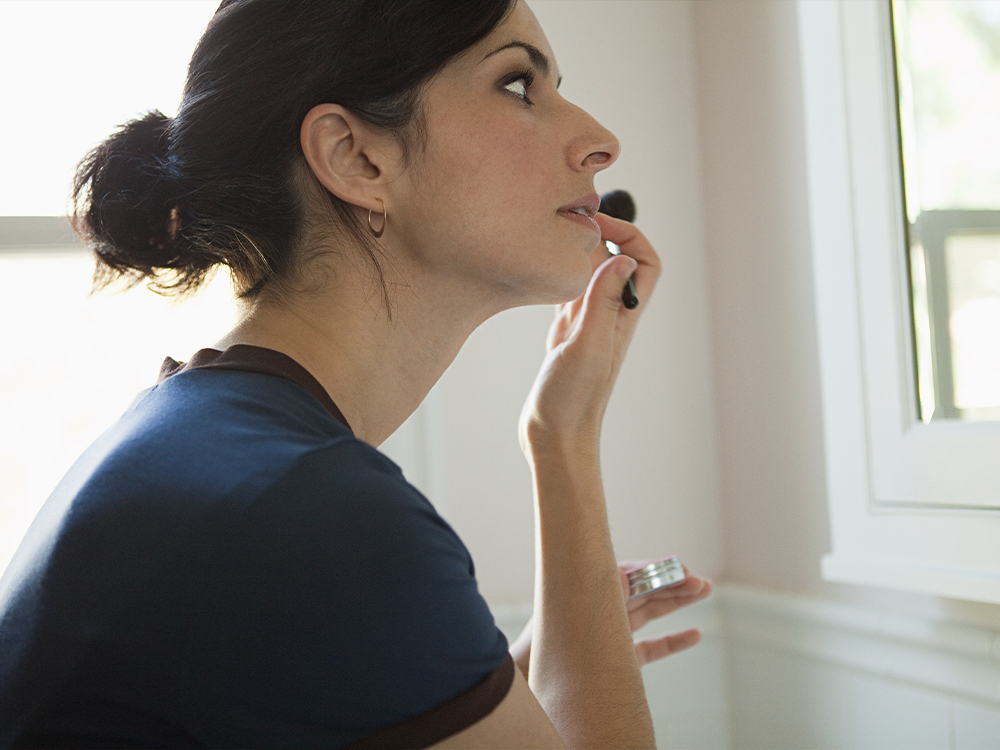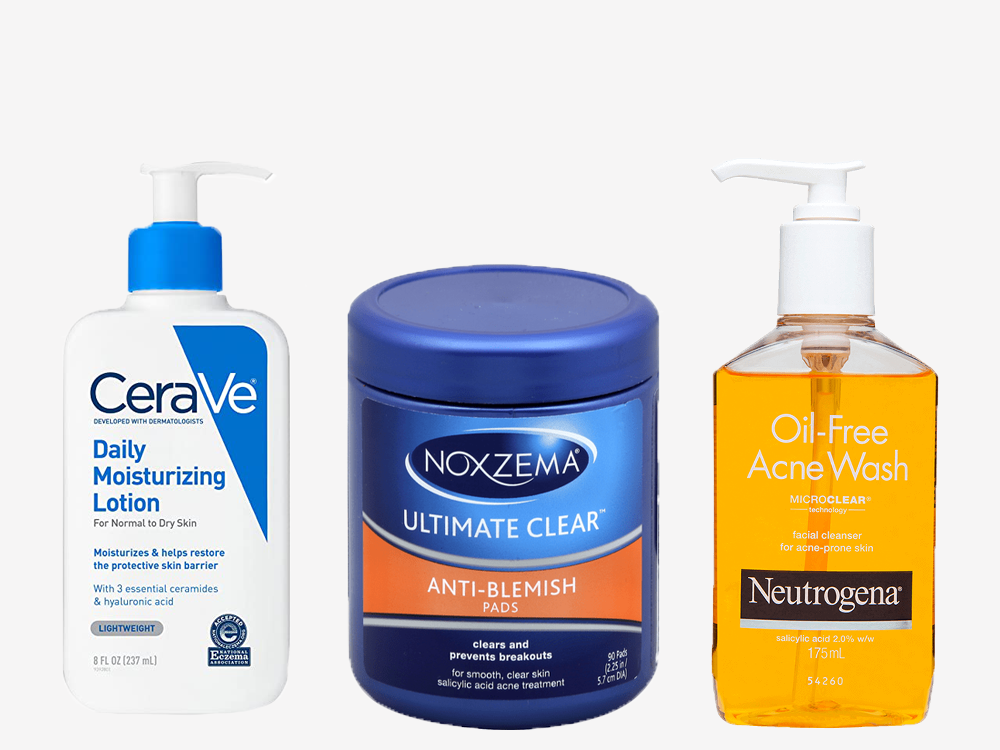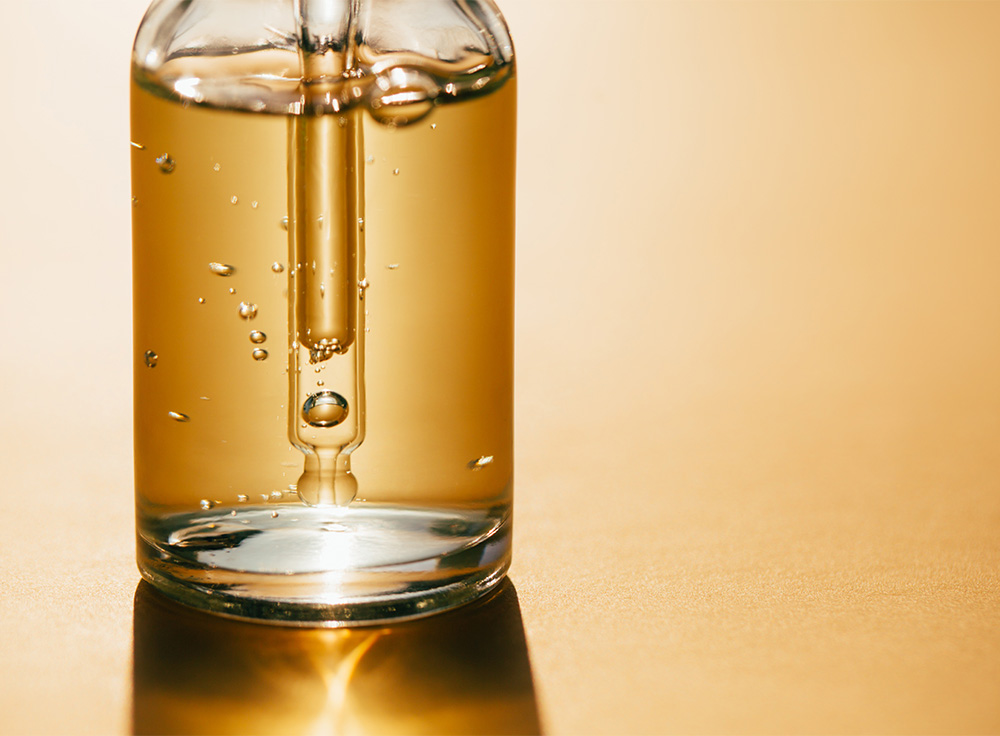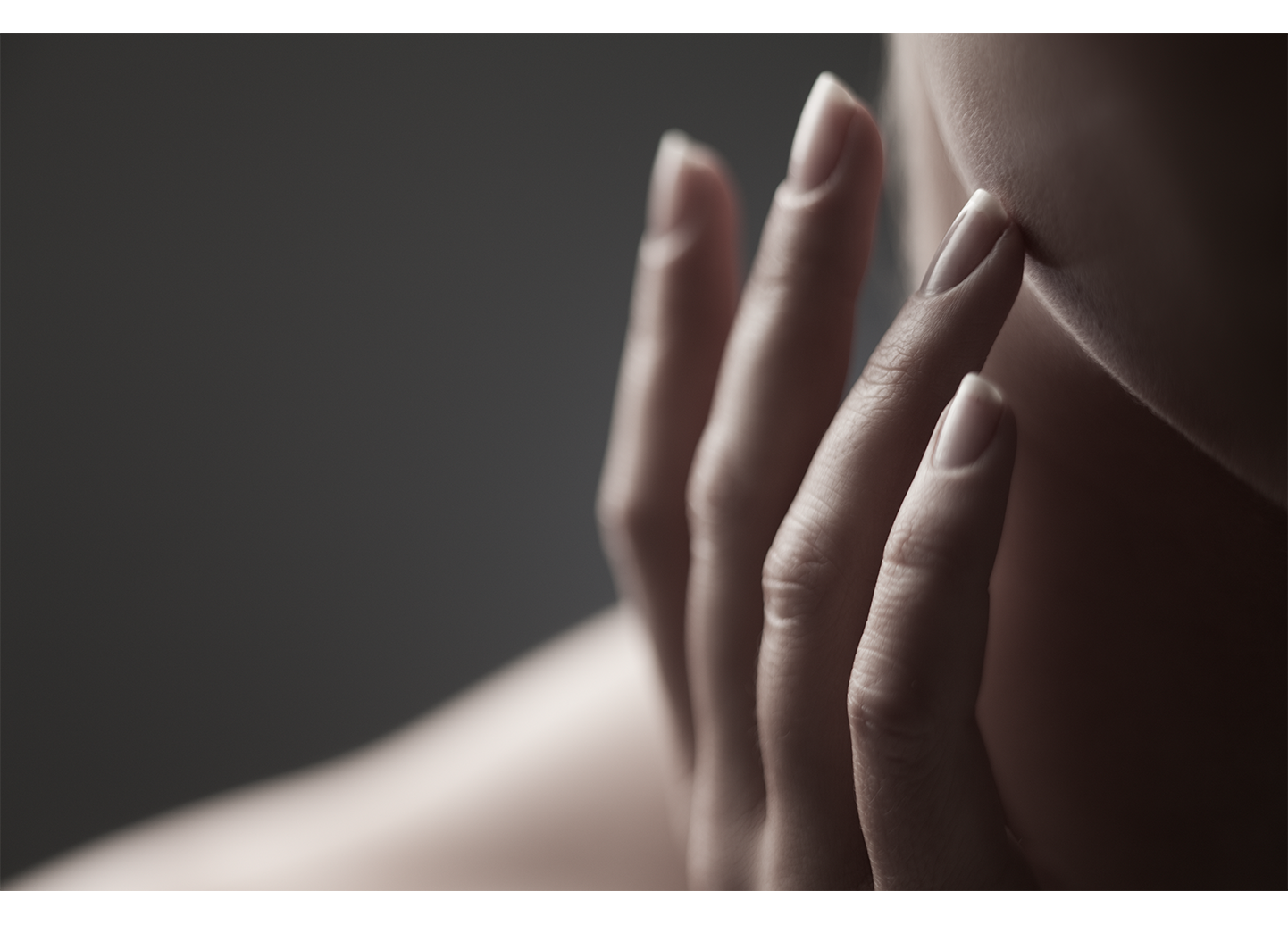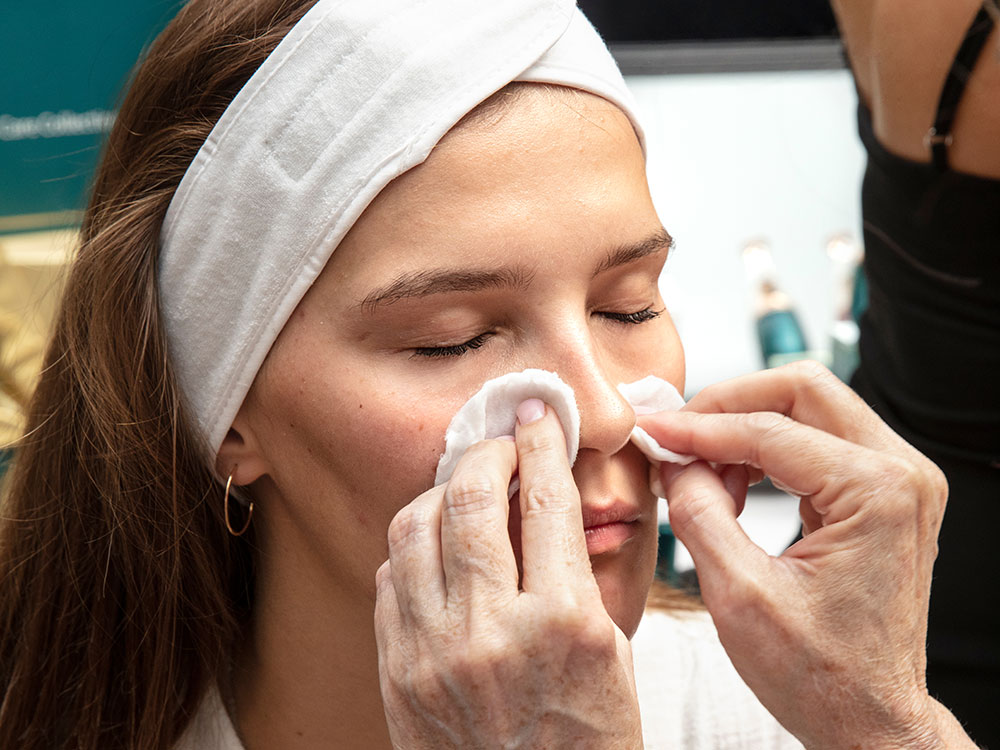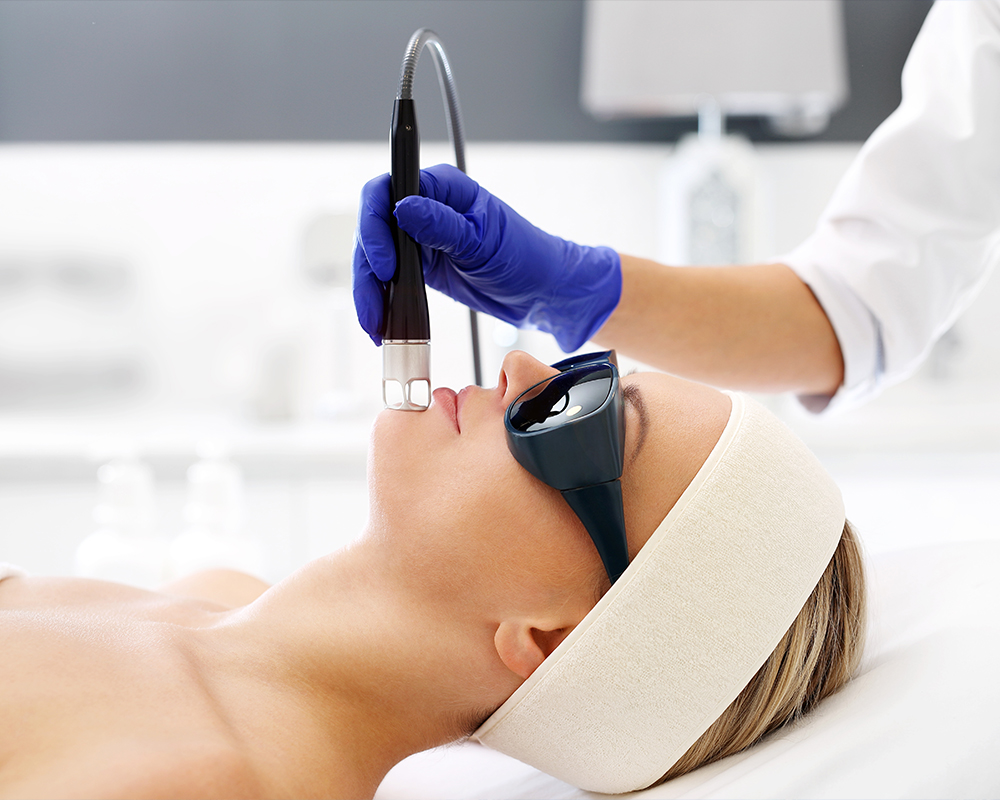If you’re struggling with problematic skin, you’re probably familiar with salicylic acid, benzoyl peroxide, and glycolic acid. However, there’s a new ingredient gaining popularity for its skin-clearing benefits: azelaic acid. In this article, we’ll explore what this naturally occurring acid is, what dermatologists have to say about it, and how to determine if it’s the right choice for your skin-care routine. Discover the benefits of azelaic acid and whether it lives up to the hype.
You May Also Like: This OTC Retinol Is Amazing for Sensitive Skin Types, According to Derms
What is azelaic acid?
Azelaic acid, a naturally occurring acid derived from barley, rye grains, and wheat, belongs to the carboxylic acid family and has antibacterial, anti-inflammatory, and antioxidant properties. This makes it an effective treatment for common skin conditions such as acne and rosacea. However, some dermatologists believe that it’s not as effective as other ingredients, and is better used as a gentle, pregnancy-safe alternative. According to Fort Lauderdale, FL dermatologist Dr. Igor Chaplik, it’s best used in combination with other products for maximum effectiveness.
Does azelaic acid help fight acne?
In one word: yes. Azelaic acid is an effective treatment for acne due to its antimicrobial properties. According to Boston dermatologist Dennis A. Porto, MD, the acid can treat both acne and hyperpigmentation resulting from it. For those with darker skin types who deal with blemishes and scarring, Conroe dermatologist Lana Hawayek, MD recommends azelaic acid. Combining the acid with other skin-clearing ingredients, such as retinol and mild salicylic acid, can provide even stronger results. Ontario dermatologist Dusan Sajic, MD recommends this combination, as the ingredients have different mechanisms that work together synergistically.
Does azelaic acid lighten hyperpigmentation?
If you’re dealing with hyperpigmentation, azelaic acid can be an effective treatment option. New York dermatologist Marisa Garshick, MD suggests that the acid can help even out skin tone and lighten up melasma. According to Dr. Porto, azelaic acid decreases abnormal melanin, which helps remove dark spots from the skin. For optimal results, Dr. Sajic recommends combining azelaic acid with tranexamic acid, vitamin C, kojic acid, and arbutin. Recent studies have shown that this combination can be just as effective as hydroquinone, which is a less popular option.
Does azelaic acid reduce redness?
Azelaic acid has been found to be effective in treating rosacea and reducing redness in skin. Dermatologists recommend it for its ability to treat acne, rosacea, and post-inflammatory acne, making it a versatile ingredient. Wilmington, NC dermatologist Kendall Egan says she likes using azelaic acid for rosacea, and many dermatologists agree that perhaps the best benefit of azelaic acid is its ability to treat acne, rosacea and post-inflammatory acne at once. “I love azelaic acid for treating rosacea, but also for treating pigmentation, especially in patients with rosacea that will not tolerate some of the other bleaching agents,” says Miami Beach, FL dermatologist Melissa Lazarus, MD.
Can you use azelaic acid everyday?
Known to be easier than most acids to tolerate—Dr. Garshick says it’s a great option for those with sensitive skin—it can be used daily. But if used in the morning, be sure to layer on SPF after, as the acid can make your skin more sensitive to UV. (It should be used after cleansing and before applying your other skin-care layers.)
The secret sauce to seeing results: consistency. “If patients follow the recommended regimen of using [azelaic acid] twice daily, along with a moisturizer and a sunblock, it is extremely effective,” says Harrison, NY dermatologist Jennifer Silverman Kitchin.
Can you use azelaic acid while pregnant?
Laguna Hills, CA dermatologist Jennifer Channual, MD says azelaic acid is her “go-to for pregnant or breastfeeding patients.” Dr. Lazarus adds: “I use it often in acne patients and melasma patients that are pregnant, as it is Category B and safe during pregnancy.”
However, some doctors will only recommend the ingredient when their patient is pregnant. “I recommend it mostly in the setting of pregnancy, since we know azelaic acid is quite safe in that setting, but it is not as potent as other options such as retinoids,” says Orange County, CA dermatologist Daniel Chang, MD.
What to try:
While prescription products such as Finacea Gel (15% azelaic acid) and Skinoren Cream (20% azelaic acid) are available from your dermatologist, over-the-counter products (commonly concentrations of 10%) can be found everywhere from Ulta to Sephora. Some favorites include The Ordinary Azelaic Acid Suspension 10% ($11)—Washington, D.C. dermatologist Sarika Snell, MD says she recommends it to patients “all the time”—Paula’s Choice 10& Azelaic Acid Booster ($39) and, for a swipe-and-go option, Farmacy Brighten Up 3% TXA Dark Spot Toner with Azelaic Acid ($34). To kick blemishes to the curb, try Tula Clear It Up ($38), which boasts salicylic and azelaic acids in one lightweight gel.
However, Dr. Channual notes that these OTC options might not be enough for certain skin types. “A mild treatment and may not be strong enough for patients who have numerous lesions, in which case, an additional topical or oral antibiotic could be added,” says Dr. Channual.
